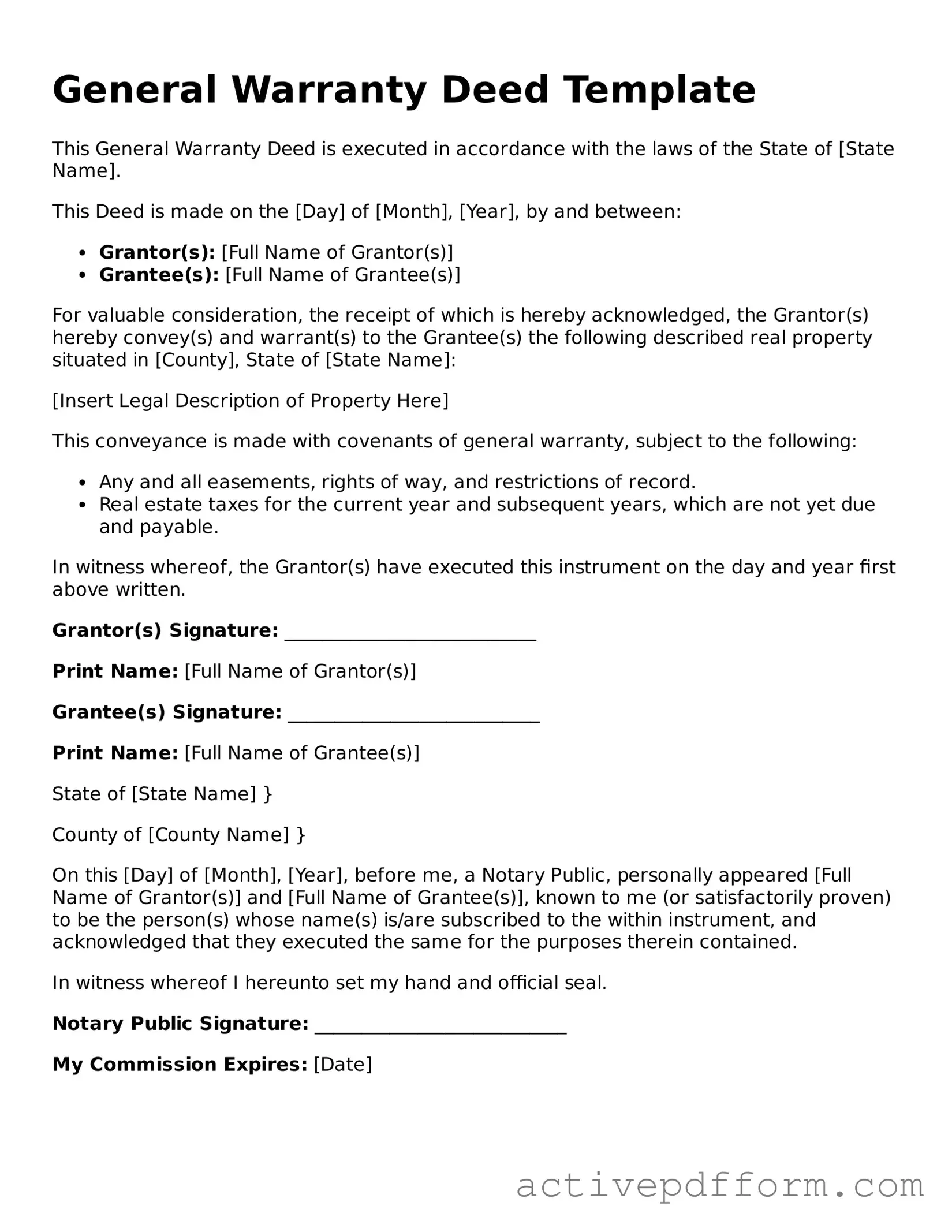General Warranty Deed Template
This General Warranty Deed is executed in accordance with the laws of the State of [State Name].
This Deed is made on the [Day] of [Month], [Year], by and between:
- Grantor(s): [Full Name of Grantor(s)]
- Grantee(s): [Full Name of Grantee(s)]
For valuable consideration, the receipt of which is hereby acknowledged, the Grantor(s) hereby convey(s) and warrant(s) to the Grantee(s) the following described real property situated in [County], State of [State Name]:
[Insert Legal Description of Property Here]
This conveyance is made with covenants of general warranty, subject to the following:
- Any and all easements, rights of way, and restrictions of record.
- Real estate taxes for the current year and subsequent years, which are not yet due and payable.
In witness whereof, the Grantor(s) have executed this instrument on the day and year first above written.
Grantor(s) Signature: ___________________________
Print Name: [Full Name of Grantor(s)]
Grantee(s) Signature: ___________________________
Print Name: [Full Name of Grantee(s)]
State of [State Name] }
County of [County Name] }
On this [Day] of [Month], [Year], before me, a Notary Public, personally appeared [Full Name of Grantor(s)] and [Full Name of Grantee(s)], known to me (or satisfactorily proven) to be the person(s) whose name(s) is/are subscribed to the within instrument, and acknowledged that they executed the same for the purposes therein contained.
In witness whereof I hereunto set my hand and official seal.
Notary Public Signature: ___________________________
My Commission Expires: [Date]
